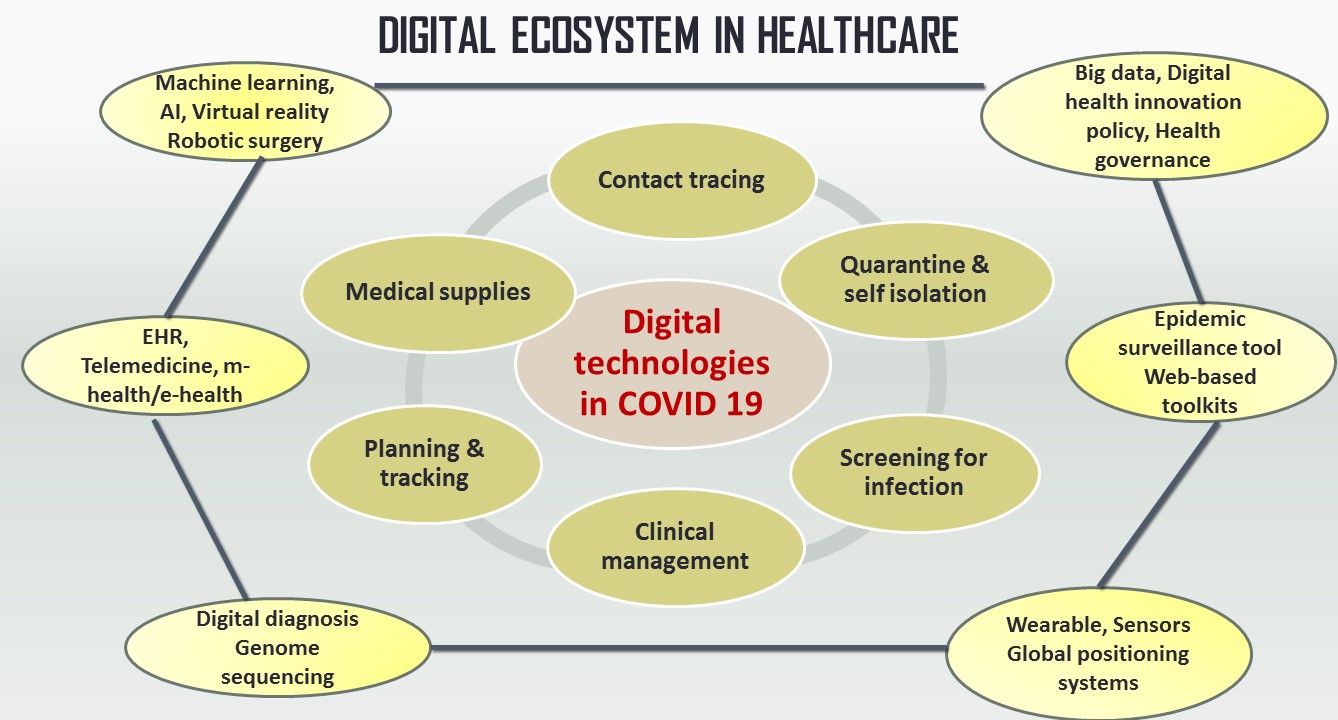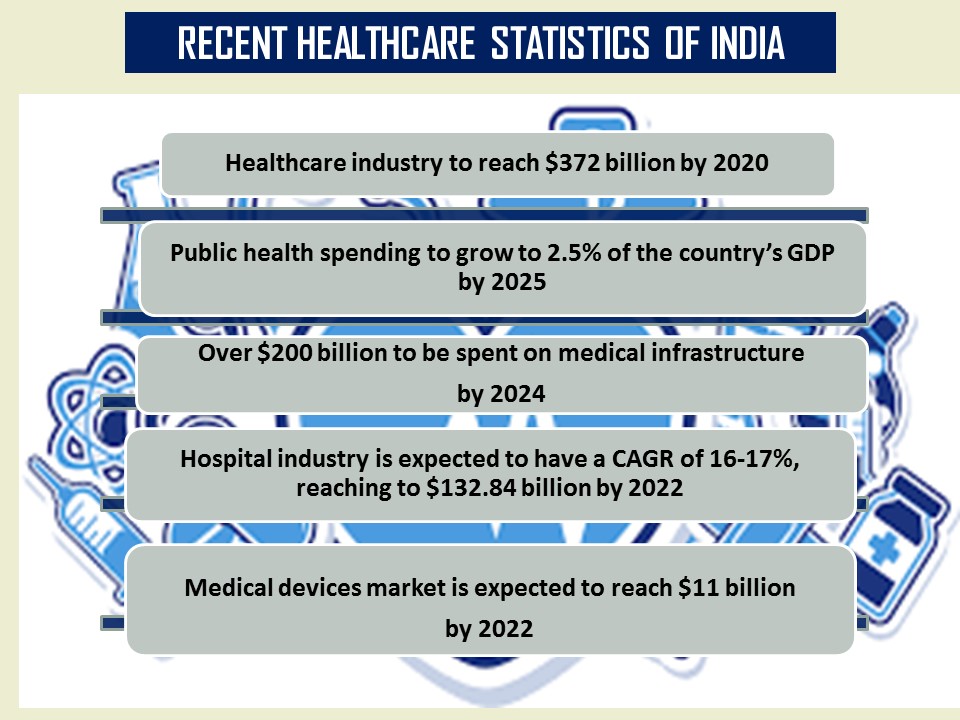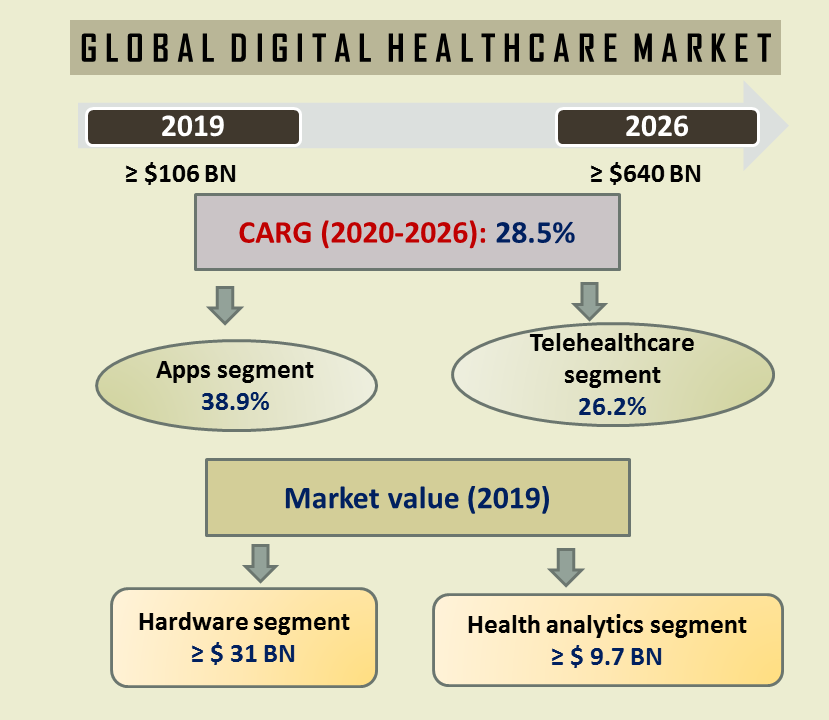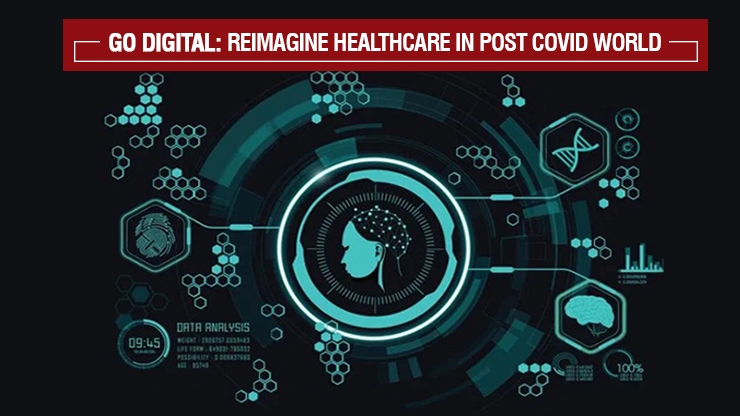The world witnessed a global pandemic since 2019 caused by the novel severe acute respiratory syndrome coronavirus 2 (SARS-CoV-2). It is characterized by high transmissibility, which led to the disruption of socioeconomic conditions around the globe. To combat the COVID pandemic the healthcare professional focuses on early diagnosis and isolation, public health quarantine with a temporal and spatial distance between patients as the consumers of health services, and healthcare providers.
Moreover, the indiscriminate lockdowns for infection control in several countries have had severe socioeconomic consequences owing to the limited communication between the different public service providers. The scarcity of doctors and hospital beds in rural as well as urban areas is causing a severe accessibility crisis of health services. Some countries have adopted strategies for coordination and data management by implementing close surveillance, testing, contact tracing, and strict quarantine. They mostly relied on adopting digital technology and integrating it into health care policy in managing the disease burden. Consequently, digital transformation in healthcare plays a significant role in helping us to cope while riding through the pandemic waves by interconnecting health data and information to reduce errors, improve efficiency and inform clinicians and individuals alike. According to WHO, digital technologies are becoming very essential for achieving universal health coverage and are considered to be vital tools to promote health, keep the world safe, and serve the vulnerable.
Major Components of Digital Ecosystem
Digital health is defined as the “use of information and communications technologies to improve human health, healthcare services, and wellness for individuals and across populations” Recent technological advancement has transformed clinical practice, from prevention through diagnosis, monitoring to disease management. The advent of digital technologies will also ensure greater patient empowerment and adherence to treatment and at the same time, it improves public understanding of the health care system more in a precise manner. The digital ecosystem comprises of Electronic Health Record (EHR), telemedicine/telepharmacy, medical tourism, big data, personal genomics, cloud-based ERP, m-Health/e-Health, virtual reality, wearable medical devices, artificial intelligence, etc. at a large.

Opportunities
The advent of digital technologies is becoming a major platform across the healthcare system in India. In the future, these can transform the global health scenario by improving patient care and thus delivers a targeted-based approach for the betterment of human wellbeing. Telemedicine/Telepharmacy allows health care in providing clinical support to reduce travel time to overcome demographic barriers without patient contact and thus improve remote healthcare. Through EHR, health care professionals can access patient information through the integration of multiple clinical informatics systems, and thus it provides an effective diagnosis of patients, improving patient and provider interaction and communication, and most importantly reducing medical errors. Implantables/wearables (from pacemakers to devices) that monitor key wellness levels such as blood sugar, blood pressure, heart rate, weight management, and diabetes monitoring, etc. can improve the patient’s well-being by addressing several non-communicable diseases. In the era of big data, genomic analysis (pharmacogenomics) with the support of artificial intelligence will enable to deliver tailored based medicine (personalized treatment) to address certain genetic diseases. Several mobile health apps are being targeted to increase patient engagement, offer health education and expert supervision from healthcare providers. The robotic based approach in healthcare can eliminate human error and time required for surgeries, in delicate, high-risk procedures, reduce the provide assistance or comfort to patients or visitors, decrease patient recovery time, reduce hospital stays, and create targeted and personalized treatments. Augmented reality (AR) and Virtual reality (VR) and are two existing simulation models that create a huge impact on medical education. In the future, the culmination of several AI-enabled technologies viz. machine learning, neural networks, natural language processing, rule-based expert systems, robotic process automation are of high importance in the development of precision medicine, imaging analysis, speech and text recognition, etc.

Digital Healthcare Market
According to a recent survey by Informa Markets (www.informamarkets.com), the digital healthcare market in India is expected to grow at a CAGR of 23% to USD 280bn by 2020 from USD 100bn in 2015. At the same time, the rise of the telemedicine market is projected to a CAGR of 20% reaching US$ 32 million by 2020 and that could save US$ 4-5 billion in the healthcare sector every year. Interestingly, the market value of AI in the healthcare sector will elevate to US$ 6 billion (INR ~431.97 bn) by 2021. The enormous growth of digital healthcare has been observed due to an increase in lifestyle diseases, an aging population, rising income levels, increasing access to insurance, and growing health awareness as a whole. There are more than 150 digital Health and Wellness technology providers are distributed throughout the world including healthcare marketing, pharmaceutical services, health technology, and allied fields.
A significant number of health-tech start-ups viz. Cure.Fit, DocsApp, Forus Health, HealthPlix, Innovaccer, LiveHealth, Lybrate, Practo, Portea, MUrgency, mFine, etc. are being operated in India for providing technology-enabled healthcare solution in preventive healthcare services, analytics, pathology, emergency services to the patients. In this context, Apollo Telehealth Service (www.apollotelehealth.com) is a pioneer in the field of telemedicine networks in South Asia, provides accessible and quality health care to urban and rural communities. Another telemedicine company, Televital (www.televital.com) functions in India which serves remote patient care through e-health, remote healthcare support, and other e-learning services. Companies like McKesson Corporation, United Healthcare Group, Oracle Corporation, Microsoft Corporation, PWC, Deloitte are focusing on healthcare data analysis to predict fact-based decisions to improve the clinical, financial, and operational performance of the healthcare organizations.

Recent Initiatives
In March 2020, the Medical Council of India (MCI) in consultation with NITI Aayog proposed a guideline on Telemedicine Practice (www.mohfw.gov.in/pdf/Telemedicine.pdf) to provide practical advice to the doctors and health workers to incorporate telemedicine as a part of their clinical practice. The purpose of these guidelines is to provide information on telemedicine applications, several technological platforms, frameworks, and other aspects of the patient management system. The Ministry of Health & Family Welfare under the aegis of National e-Health authority has initiated the e-Health initiative (www.nhp.gov.in) with the help of health information data and mobile technology. It provides online medical consultation, medical records, and medical supply management to the patients especially rural, geriatric patients with minimal cost. In July 2020, WHO (www.who.int) published one draft guideline on “Global Strategy on Digital Health” targeted to policymakers, practitioners, and the population where they emphasize the importance and scalability of digital health solutions to promote health and wellbeing in response to epidemics and pandemics. In recent times, FDA (www.fda.gov) launched the “Digital Health Centre of Excellence” in aiming to connect and build partnerships among digital health innovators, the public, and the FDA staff for the advancement of digital health care practices/products for the betterment of the society. A report published by the European Institute of Innovation and Technology (EIT) Health McKinsey & Company (March 2020), where they highlighted the role of Artificial intelligence (AI) as a potential tool to increase productivity and efficiency in digital healthcare services. The implementation of the Health Insurance Portability and Accountability Act (HIPAA) (www.hhs.gov) will also lead to proper management of healthcare data with the highest standard and quality.
Major Challenges
Although digital transformation reaps the future of the healthcare system, it still faces some major threats. An interdisciplinary approach should be taken care of among the technology entrepreneurs, investors, developers, and practicing physicians to overcome the barrier of digital health. The validated healthcare data has become a major challenge in developing an AI-based system in this industry. Also, a stringent regulatory guideline is required to streamline digital technology for higher patient safety, compliance. Due to the lack of an evidence-based approach, sometimes digital health facilities are not capable enough in deciding for patient evaluation, diagnosis, and treatment. The deficiency in scalability, data governance, and interoperability of electronic health records (EHRs) also hinder the cross-functional activities in healthcare for individuals and communities. Moreover, the poor accessibility of internet data, especially in a rural area, challenges the accessibility of m-health and other cloud-based telehealth platforms.
Future Direction
The interdisciplinary approaches among the information technologist, software developers, data scientists, doctors, pharmacists, researchers, medical device manufactures, healthcare managers, robotics technologists, regulators, and policymakers can revolutionize the market of digital healthcare. In the future, the implementation of digitized clinical trials and digital therapeutics (DTx) will impart a major paradigm shift in the healthcare industry by transferring the focus from treatment to prevention. Moreover, the digital epidemiological surveillance can also be utilized in regulating public health for pandemic preparedness of communicable disease at large.
References:
-
- Alvandi et al., 2017, Telemedicine and its Role in Revolutionizing Healthcare Delivery, The American Journal of Accountable Care.;5(1):e1-e5
- Budd et al., 2020. Digital technologies in the public-health response to COVID-19. Nat Med 26, 1183–1192
- Weaver et al. (eds.), 2016, Healthcare Information Management Systems: Cases, Strategies, and Solutions, Health Informatics, DOI 10.1007/978-3-319-20765-0_13
- Majumder & Bansal, 2010, Healthcare in the era of digital convergance, SetLabs Briefing 8, 27-32
- Portnoy et al., 2020, Telemedicine in the Era of COVID-19, J Allergy Clin Immunol Pract, https://doi.org/10.1016/j.jaip.2020.03.008
- Whitelaw et al., 2020, Applications of digital technology in COVID-19 pandemic planning and response, Lancet Digital Health;2: e435–4


 6 Sep 2021
6 Sep 2021



